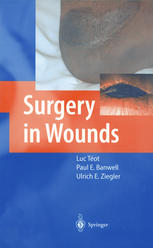

Most ebook files are in PDF format, so you can easily read them using various software such as Foxit Reader or directly on the Google Chrome browser.
Some ebook files are released by publishers in other formats such as .awz, .mobi, .epub, .fb2, etc. You may need to install specific software to read these formats on mobile/PC, such as Calibre.
Please read the tutorial at this link: https://ebookbell.com/faq
We offer FREE conversion to the popular formats you request; however, this may take some time. Therefore, right after payment, please email us, and we will try to provide the service as quickly as possible.
For some exceptional file formats or broken links (if any), please refrain from opening any disputes. Instead, email us first, and we will try to assist within a maximum of 6 hours.
EbookBell Team

0.0
0 reviewsThe management of wounds poses a considerable challenge for clinicians. It is with great pleasure that we therefore introduce ‘Surgery in Wounds’ to the wound healing fraternity to convey some important surgical perspectives and philosophies that are utilised when dealing with an array of difficult wounds.
There is no doubt that our improved understanding of wound healing biology and new technologies will continually influence clinical practice. Traditionally, reconstructive surgeons have adopted a one-stop surgical approach for the closure of wounds over the last few decades using flap surgery as the cornerstone of their armamentarium. However, alternative and adjunctive solutions are now being developed which offer a new staged approach to wound management. In particular, we must embrace these ideas into surgical practice as well as integrating ideas from across all surgical disciplines.
This book brings together a veritable wealth of surgical experience and reflects practice on a global scale. It explores many avenues: from basic concepts to advanced reconstructive procedures. We hope that this may expose the reader to new ideas and generate the enthusiasm and desire to apply these lessons to their own clinical practice.
There are two kinds of knowledge: that which we already know, and that which we know where to find. ‘Surgery in Wounds’ offers an opportunity to find such knowledge readily and we hope will be a welcome addition to the libraries of individuals and institutions alike.